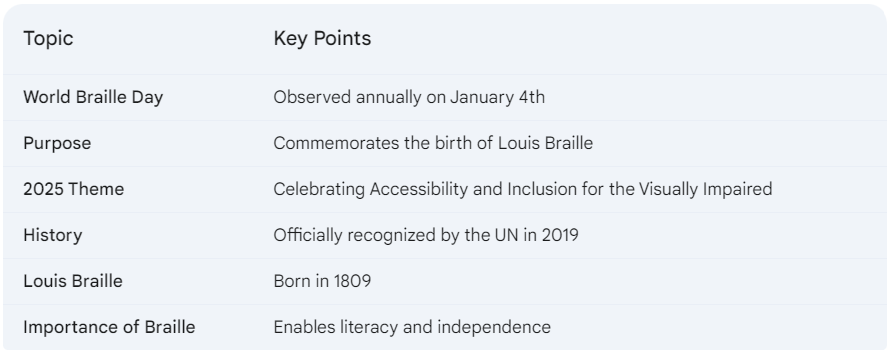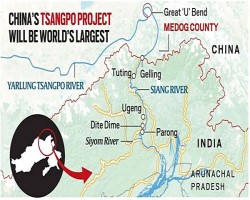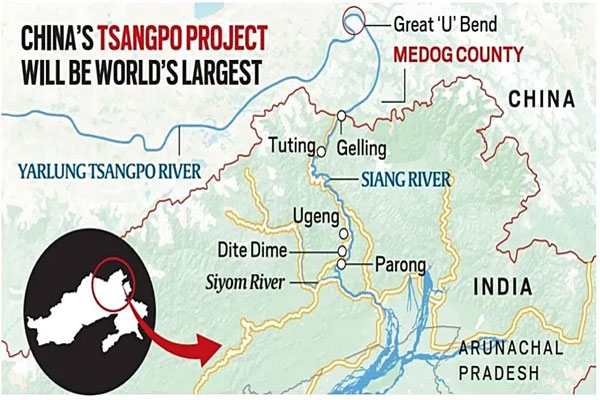UPSC Current Affairs
TABLE OF CONTENTS |
| International Relations |
|---|
|
|
|
In 2023, Thailand and Malaysia introduced visa-free entry for Indian nationals, aiming to attract more tourists and compensate for declining Chinese tourist inflows post-pandemic. The initiative has proven successful, prompting both nations to extend the facility. Airlines responded by significantly increasing flights and seat capacity between India and these countries. In the October-December 2024 quarter, flights between India and Thailand rose by 35.5% year-on-year (YoY), while seat capacity increased by 31.4%. Similarly, India-Malaysia flights grew by 20.5% YoY, with a 19.3% increase in seat capacity. The upward trend is set to continue, with projections for the January-March 2025 quarter showing a 48.3% increase in India-Thailand flights and a 36.8% rise for India-Malaysia. |
|
|
|
On December 25, China approved the construction of the world’s largest hydropower project on the Yarlung Tsangpo (or Zangbo) river in Tibet. Once completed, this 60,000 MW project will generate three times the electricity produced by the current largest hydro project, the Three Gorges Dam on the Yangtze River in central China. |
| Important Days |
|
|
|
World Braille Day, observed annually on January 4, commemorates the birthday of Louis Braille, the inventor of the Braille system, a revolutionary tactile reading and writing system for people who are visually impaired or blind. The day highlights the importance of Braille as a means of communication, literacy, and accessibility, ensuring equal opportunities and rights for visually impaired individuals worldwide.
Who Was Louis Braille? Born on January 4, 1809, in Coupvray, France, Louis Braille lost his eyesight at the age of three due to an accident. Despite his disability, he excelled academically and went on to develop the Braille system at the age of 15. His system of raised dots enabled blind individuals to read and write independently, empowering them with education and communication tools. World Braille Day 2025 Theme Every January 4th, World Braille Day is celebrated to honour Louis Braille’s legacy and contribution and to spread awareness of its importance as a tactile system of reading and writing for the blind or visually impaired. The theme for 2025 World Braille Day is Celebrating Accessibility and Inclusion for the Visually Impaired. History of World Braille Day: World Braille Day is an international event observed every January 4th to spread awareness of Braille and the significance of the independence of individuals. The United Nations recognised the day for the first time in 2019. The event aims to raise awareness about the importance of Braille in promoting human rights for visually impaired individuals. The United Nations General Assembly (UNGA) chose the date for the event through a proclamation in November 2018. Facts About Louis Braille: Louis Braille was not born blind. He lost his sight at the age of three after he stabbed himself in the eye while playing with tools at his father’s shop. By the age of 5, he was completely blind. At the age of 10, Louis attended the Royal Institution for Blind Youth in Paris, one of the first blind schools in the world. At the age of 15, Louis invented the system of Braille using raised dots. At age 20, he published the first Braille book titled Method of Writing Words, Music, and Plain Songs by Means of Dots for Use by the Blind and Arranged for Them. He passed away on January 6, 1852. Two years after he died, Braille was finally introduced at the Royal Institution. Louis Braille was also a musician, proficient in playing the organ and cello. Importance of Braille: Braille is more than just a tactile script. It is a tool for empowerment, inclusion and dignity for visually impaired individuals. The invention of Braille has opened up new opportunities for blind or visually impaired individuals. It enables them to read books, thus helping them to become literate as well as independent and increase their chances of employment. Here’s a smart trick to remember the key points about World Braille Day using the acronym "BRAILLE": B - Birthday of Louis Braille celebrated on January 4th R - Revolutionary System: Braille system empowers visually impaired individuals with reading and writing skills A - Accessibility: 2025 Theme – Celebrating Accessibility and Inclusion I - Independence: Braille enables literacy and independence for visually impaired individuals L - Legacy: Recognized globally to honor Louis Braille's legacy L - Louis Braille: Born in 1809, developed the system at age 15 E - Established by the UN: Official recognition of World Braille Day began in 2019 
|
|
|
|
Frequently Asked Questions (FAQs) in Competitive Exams:
1. When is World Braille Day observed? A. January 3 B. January 4 C. February 4 D. December 4 Answer: B. January 4 2. What is the theme for World Braille Day 2025? A. Empowering the Visually Impaired B. Braille: A Tool for Literacy C. Celebrating Accessibility and Inclusion for the Visually Impaired D. Honoring Louis Braille’s Legacy Answer: C. Celebrating Accessibility and Inclusion for the Visually Impaired 3. In which year was World Braille Day officially recognized by the United Nations? A. 2015 B. 2018 C. 2019 D. 2020 Answer: C. 2019 4. What does Braille primarily enable for visually impaired individuals? A. Increased mobility B. Literacy and independence C. Access to technology D. Better communication with sighted individuals Answer: B. Literacy and independence |
|
<< 3-Jan-25
|
|
|



